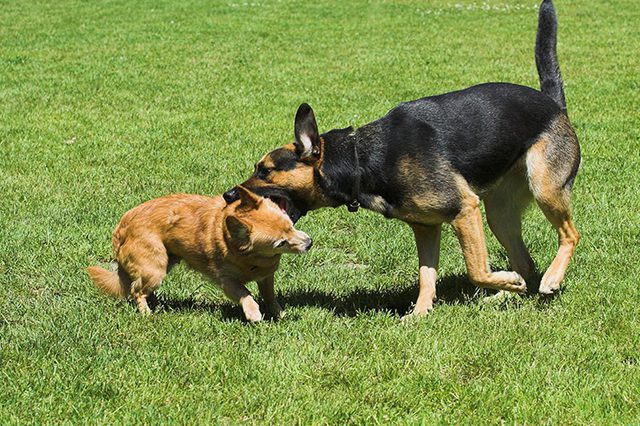Lately, I’ve had a wave of dogs come in with separation anxiety. While the signs can look similar, the root causes are often very different. If your dog struggles to be alone, it’s important to take a step back and ask: is this true separation anxiety, or is it confinement anxiety?
Here’s a quick breakdown:
If your dog is fine being left alone to free roam but panics in the crate, they’re likely struggling with crate or confinement anxiety.
If your dog whines, barks, destroys things, or paces when you’re gone regardless of where they’re left, it’s more likely true separation anxiety.
Either way, we want to give our dogs the tools they need to feel safe, calm, and confident when we’re not there. And while we use similar training techniques for both, the full picture includes everything from crate manners to emotional regulation and environmental structure.
Crate Training Isn’t Just About the Crate
One dog I recently worked with had no problem free roaming when left alone and even walked into the crate willingly while his people were home. But the moment the crate door shut and they walked out the door, it was a full-blown meltdown. Barking, howling, pacing. It got so bad that the business downstairs actually threatened to call the police when he was a puppy.
It’s easy to see why crate training came to a screeching halt after that. But the reality is, our dogs will likely need to be crated at some point. Whether it’s a vet visit, travel, or simply to keep them safe while we’re out, crate training shouldn’t feel like punishment. It should feel like a neutral, cozy space. And for anxious dogs, that means intentionally creating that feeling.
Teaching the Crate as a Calm Space
The first step is clarity. I start every crate session with the dog on an e-collar for clear communication. Walk briskly to the crate and stop just before the door. If your dog tries to rush in, pause and wait for calmness. Once they’re composed, give a calm “crate” command and guide them in.
Most dogs immediately try to come right back out. This is where the crate door becomes a teaching tool. Gently close it before they can exit. Then slowly open the door again. If they push out, close it again. Repeat until your dog stays calmly inside, even with the door open.
Once they can wait without rushing, give your release command and invite them out. Repeat this exercise several times. You're not just teaching crate manners. You're helping your dog build emotional regulation and confidence through repetition and routine.
Interrupting the Anxiety Spiral
Once your dog can enter and exit the crate calmly, the next step is helping them learn how to be alone. Don’t wait until you're rushing out the door. Practice when you’re home and have the time to work through it.
Start with short durations. Crate your dog and walk out of the room for five minutes. Many anxious dogs will begin whining, clawing, or pacing. These aren't cries for attention. They’re signs your dog is working themselves into a state of panic.
You need to interrupt the anxiety cycle with a consequence your dog finds meaningful. This isn’t about punishment. It’s about disrupting the spiral so your dog has the opportunity to calm down. I often use the e-collar, pet convincer, or bonker depending on the dog’s temperament. The goal is always the same: break the cycle and create calm.
For dogs who escalate quickly when left completely alone, a bark collar can be a game-changer. It provides consistent feedback even when you’re not home, helping the dog self-regulate without relying on your presence.
Pay attention to subtle signs of stress like sniffing the crate door, pacing, or pawing at bedding. Interrupting early prevents escalation and sets your dog up for success.
Once your dog can stay relaxed in the crate while you're home, it’s time to practice short absences. I use a baby monitor or Facetime to watch and correct from outside. Keep sessions short and increase gradually as your dog improves.
Calm Exits and Intentional Goodbyes
One of the most effective things you can do is stop making a big deal when you leave.
No petting, no baby talk, no emotional goodbyes. These actions spike adrenaline and raise your dog’s anxiety just before you walk out the door. Instead, crate your dog 15 to 20 minutes before leaving. This gives them time to settle, and you time to address any early stress signals.
The goal is for your dog to associate crate time with neutral, calm moments rather than emotional transitions.
Controlling Movement in the Home
Separation anxiety rarely exists in isolation. Most dogs who struggle with being alone also struggle with independence while you're home. They follow you from room to room, rest at your feet, and can't seem to relax unless you're nearby.
It might seem like loyalty, but more often it’s insecurity. Your dog is trying to control the space and reduce their own anxiety by staying close to you.
One of the best ways to counter this is by teaching a strong place command with duration. It gives your dog a job, creates structure, and teaches them how to self-soothe even when you’re across the room. It's not just obedience. It’s mindset work.
Give It Time, and Stay Consistent
Separation anxiety in dogs can be incredibly frustrating. It takes time, consistency, and commitment to work through. But with a clear plan and the right tools, your dog can absolutely learn how to relax and thrive in your absence.
Through crate training, movement control, and emotional regulation, we’re giving our dogs more than just manners. We’re giving them confidence. And that kind of change lasts.
If you're struggling with these issues, don’t hesitate to reach out. We offer structured dog training programs in Baltimore that are designed to support both dogs and their people through real-world change.

